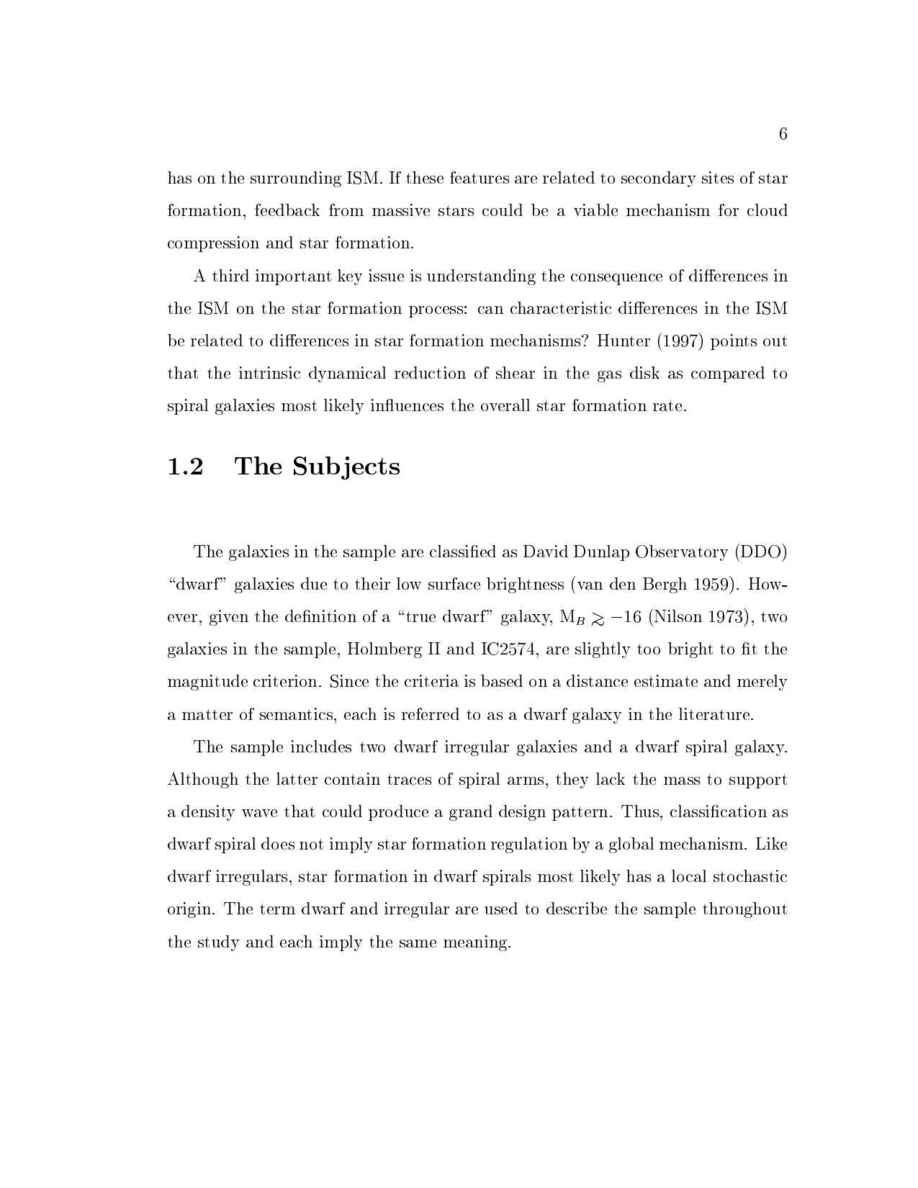
6
has on the surrounding ISM. If these features are related to secondary sites of star
formation, feedback from massive stars could be a viable mechanism for cloud
compression and star formation.
A third important key issue is understanding the consequence of di erences in
the ISM on the star formation process: can characteristic di erences in the ISM
be related to di erences in star formation mechanisms? Hunter 1997 points out
that the intrinsic dynamical reduction of shear in the gas disk as compared to
spiral galaxies most likely in uences the overall star formation rate.
1.2 The Subjects
The galaxies in the sample are classi ed as David Dunlap Observatory DDO
dwarf" galaxies due to their low surface brightness van den Bergh 1959. How-
ever, given the de nition of a true dwarf" galaxy, M
B
,
16 Nilson 1973, two
galaxies in the sample, Holmberg II and IC2574, are slightly too bright to t the
magnitude criterion. Since the criteria is based on a distance estimate and merely
a matter of semantics, each is referred to as a dwarf galaxy in the literature.
The sample includes two dwarf irregular galaxies and a dwarf spiral galaxy.
Although the latter contain traces of spiral arms, they lack the mass to support
a density wave that could produce a grand design pattern. Thus, classi cation as
dwarf spiral does not imply star formation regulation by a global mechanism. Like
dwarf irregulars, star formation in dwarf spirals most likely has a local stochastic
origin. The term dwarf and irregular are used to describe the sample throughout
the study and each imply the same meaning.
